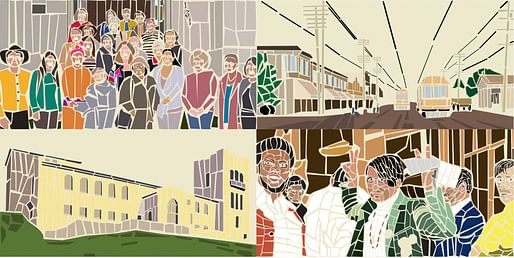

"Giving the boulevard back to the people... makes the streets habitable again," says Sean O’Malley of SWA. — swa group
How does a 10-block neighborhood intervention of volunteers in Highland Park, Los Angeles link to a $325 million streetscape and storm water infrastructure transformation in Shenzhen, China? “This is about giving the street and the boulevard back to the people,” says Sean O’Malley, Managing Principal of SWA, the landscape architecture, planning and urban design firm. Throughout history, China has been a country connected by the intimacy of village life: the chance encounter on the street, the smile of a passerby. Small streets that were once filled with people are now large boulevards of traffic, noise, and pollution. As China has grown rapidly, it has lost much of its connection to its past. “We aim to make the streets habitable again,” says O’Malley.
A major focus of the commission from the City of Shenzhen is the revision of a street system in the new urban core that was designed strictly for automobiles just a few decades ago. As part of a winning competition proposal, SWA stressed the importance of pedestrian street life to the physical, economic, and mental health of those living in modern cities. The goal in Shenzhen -- across 33 boulevards of the cultural district of Guangming -- is to activate the streetscapes and encourage people to spend more time outdoors and promote community involvement.
To that end, a flexible garden mosaic strategy was developed that includes a menu of “people” space—plaza, seating, playgrounds, intimate outdoor rooms—at a variety of scales that can be “plugged in” beneath a welcoming established canopy of shade trees. These spaces can evolve with the changing neighborhoods framing them—morphing from strolling gardens to high-use playgrounds and exercise plazas. Throughout, a consistent materials vocabulary can be easily implemented and maintained.
In a ten-block corridor in the historic Los Angeles neighborhood of Highland Park, SWA is working with the nonprofit community group LANI (Los Angeles Neighborhood Initiative) to improve the pedestrian experience and safety for local residents. This small but crucial intervention will take the form of a series of tiles embedded in architectural concrete located within the sidewalks at key intersections. The mosaics will serve as tactile and visual cues for both pedestrians and passing automobiles. Historic images of people, places, and special events in Highland Park will decorate the tiles and help to unify an incoherent and unsafe streetscape suffering from a confusing identity. ““These projects are not only functional, but also beautiful and meaningful to the users,” says Ying-Yu Hung, also a Managing Principal of SWA.
No Comments
Block this user
Are you sure you want to block this user and hide all related comments throughout the site?
Archinect
This is your first comment on Archinect. Your comment will be visible once approved.